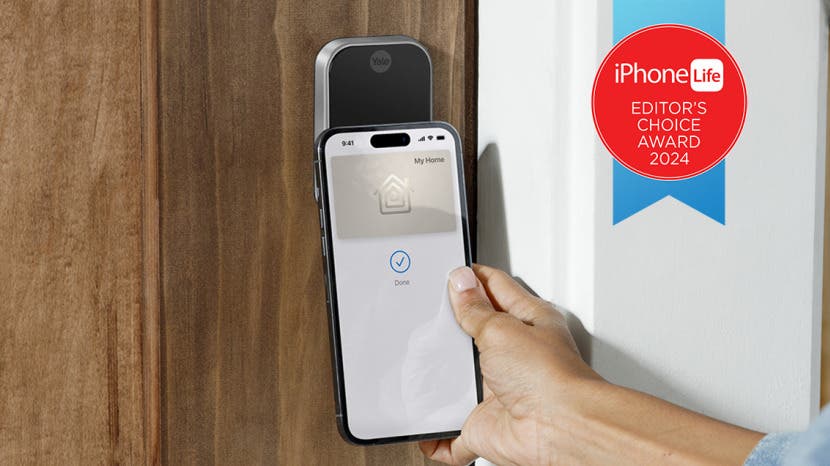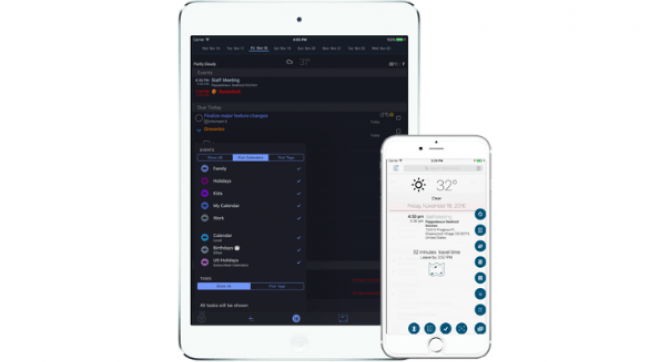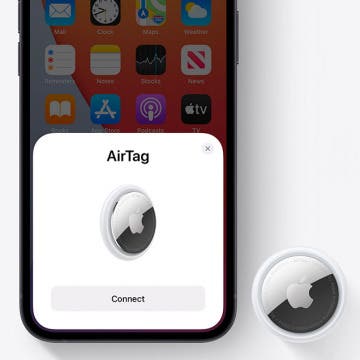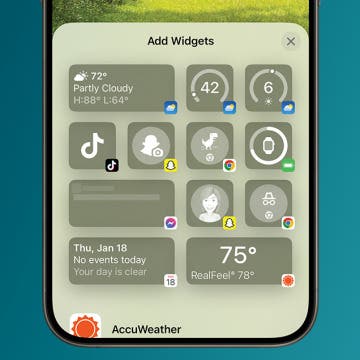
The Apple HomeKit framework and Home app are relatively new, but the possibilities for pairing smart home systems and products are already amazing. Our 2018 smart home roundup is great for those interested in purchasing their first Apple home device, as well as those who have already started dabbling in smart home technology. Whether you're interested in a smart thermostat or a smart lock, an app-controlled robot vacuum or even a smart mattress (yes, those exist) we've reviewed the best accessories you need to update and automate your home.
Related: Review: Affordable Security Cameras for Inside Your Smart Home
Top Smart Home Takeaways
Smart Homes Aren't Cheap
I struggled to find budget-friendly items for this roundup. For example, a smart light bulb costs roughly ten times that of a standard bulb. Some devices in this category such as smart thermostats can save you money in the long run, but for most smart home devices, you’re paying a premium for convenience.
Make Apple HomeKit Compatibility a Priority
HomeKit makes smart home accessories much easier to use. Rather than having to use a separate app for each accessory, you can control all of them from the Home app. You can also create automation that involves multiple devices. Most importantly, you can use Siri to control your devices so that you don’t need to be constantly on your phone.
Smart Home Devices Are Better Together
Smart home accessories create a synergy—the more you own, the more useful they become. With a house full of smart lights, you can tell Siri to turn off all the lights at once. If you add in multiple types of devices, you can create even more synergy. Currently, I have my smart home set up so when I say goodnight to Siri, it turns off all the lights, locks the front door, and adjusts my thermostat.
These Are Early Days for Smart Homes
While smart home accessories have come a long way, they’re still far from perfect. Even the products on this list can be complicated to install and will malfunction on occasion. At times, it can feel like whatever convenience is achieved with these devices is countered by the hassle of troubleshooting them. Between the high price and the finicky nature of these devices, most smart home accessories are still best suited for early adopters who enjoy having the latest technology rather than everyday consumers who don’t want to deal with setting up and learning a whole bunch of expensive new tech.
Best Smart Home Gear of 2018

eero Home WiFi System ($399)
The vast majority of smart home devices communicate with each other and with you via Wi-Fi. This makes your router kind of like the central nervous system of your smart home. Having a strong signal in every corner of the house is essential for setting up a smart home.
Eero is what’s called a mesh router. Rather than having one central location, Eero comes with a router and two Wi-Fi extenders called beacons that you can plug in anywhere in your home. Eero uses machine learning to manage which devices in your home are connected to which beacons. I have plaster walls and have struggled to get coverage in my home, especially with a 5Ghz connection. The Eero allows me to have excellent coverage throughout my house. It was also absurdly simple to set up. If $400 sounds too expensive and you have a smaller home or aren't that concerned with coverage, Eero offers the router without the beacons for $200.

Apple HomePod Smart Speaker ($349)
I’ve owned Apple’s smart speaker since its release in February of 2018. For most of that time, I’ve primarily used the HomePod in the same way I would any other wireless speaker.
While it has excellent sound quality, it has a limited feature set compared to the Amazon Echo ($99.99), and I haven’t found it useful in my day-to-day life. Once I set up my smart home though, that completely changed. The HomePod is now the command center for controlling every HomeKit-compatible device in my house. I also have an Amazon Echo in my house, and I was surprised to find HomeKit to be much easier to set up and use than Amazon’s smart home integrations. The Echo was really difficult to set up and fails to execute my smart home commands at least half of the time.

August Smart Lock Pro + Connect ($279)
The August Smart Lock might be my favorite of all of my smart home accessories. It automatically locks the door when I leave the house and unlocks the door when I arrive at home. The lock comes with a companion app, which allows me to unlock the door remotely (even when I’m not in the house) and create a temporary key for guests by equipping their smartphones with access for a limited time. You can install this smart lock with any single cylinder deadbolt. Having a door that locks automatically is great for my peace of mind, but I’ve found I keep accidentally locking people out. I recommend getting the August Doorbell Cam Pro ($199) along with the lock so that you can know when someone arrives at your home (even when you aren't there).

ecobee4 smart thermostat with Room Sensor ($249)
I’ve used a Nest thermostat in my house for years and have loved it, but I’ve recently made the switch to ecobee. Just like the Nest, the ecobee uses algorithms to create smart schedules for my heating and cooling, and also allows me to control my thermostat remotely via a companion app. But the ecobee has several other features that make it my smart thermostat of choice. First of all, it’s compatible with HomeKit, which means I can control the temperate using Siri and create automated rules in the Home app. Second, it comes with a sensor that integrates with the thermostat. The second story of my house isn't well ventilated, and my thermostat is located downstairs. So when it thinks it has hit the correct temperature, it’s still uncomfortable on the second story. With the ecobee, I can place the sensor upstairs and have my thermostat rely on that reading instead. The final perk of the ecobee is that it comes with Amazon Alexa integration. While I use Siri primarily, it’s still nice to be able to talk directly to the thermostat using Amazon’s artificial intelligence when I don’t have my phone handy.

Nest Protect Smoke & CO Alarm ($119)
The Nest Protect smart smoke + CO detector is probably the least exciting product on this list but the most likely to save my life. The smoke detector works with Nest’s app and sends a notification any time it detects smoke or carbon monoxide. I can’t tell you how much peace of mind that creates, knowing that I’ll be notified of a fire in my home, even if I’m not there. It also allows me to turn off the smoke detector from the app when it’s a false alarm rather than having to climb a chair and take out the battery, the old-fashioned way. Finally, when the Protect is running low on batteries, I get a push notification on my phone rather than an annoying beeping noise at 3 a.m.

Philips Hue White and color ambiance Starter kit ($199)
Philips makes a wide range of excellent smart lights. The lights come with a companion app and are HomeKit compatible, allowing you to control the lights from your phone or from Siri. The app is very intuitive, and installing the lights was relatively easy. Not only can you turn on and off the lights from your phone, but you can also adjust the color and brightness.
It’s really nice to be able to have a softer light in the evenings, and I’ve found that adding a little bit of pink to the light can give the room a really nice feel. While I’ve enjoyed being able to control the lights using Siri, the lights only respond to Siri when the switch is turned on, meaning that to make the lights useful, you have to commit to only controlling them with your phone or Siri and never using the light switches.

Nanoleaf Light Panels (Just the Basics) ($229)
The Nanoleaf light panels are the least practical item on the list, but the most fun. The Dz Just the Basics bundle comes with nine modular triangular lights. You can arrange the lights into any pattern you like and mount them on your wall using the included double-sided mounting tape. You can control them with your phone from the companion app or by using HomeKit. The lights can change colors based on various patterns that you can select in the companion app. They also come with the Nanoleaf Rhythm, which allows the lights to respond to music. I have my lights set up above my record player, and they are a really unique addition to the home. This was a fun device to show off! I give the Nanole a 10 out of 10 stars for the wow factor.

Eight Jupiter+ Mattress ($999-$1,299)
Eight’s smart mattresses have sensors built into the mattress that allow you to monitor your sleep patterns. The app gives you a sleep report each morning that tracks when you fell asleep and how often you were in deep sleep. The sensors are also compatible with HomeKit, which means you can build custom rules, such as turning off the lights and locking the doors when you get in bed. $999 is very expensive for a smart home accessory but actually very affordable for a mattress. Not only does Eight come packed with smart features, but it’s also a very comfortable memory foam mattress.

iRobot Roomba 960 Wi-Fi Connected Vacuum Robot ($599.99)
iRobot is making the dream of having robots clean my house a reality. Smart vacuums have been around for a while now but have come a long way since their initial introduction. The Roomba 960 supports multiroom and multi-surface cleaning. You can control it via a companion app that lets you schedule cleanings and view a report after each, including a map of what has been cleaned. The app notifies you if the Roomba gets stuck or if the bin needs to be emptied. Robotic cleaning is not yet perfect—it can’t handle stairs and occasionally gets stuck (I had to rescue my Roomba a time or two)—but it’s still really convenient and well worth the expense.




















